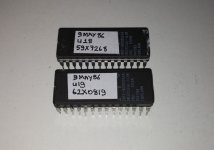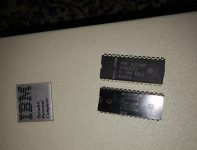I had a look at some of my boards, 64-256K motherboard with original ROMS have no wiring mods, 256-640K motherboard with original ROMS have no wiring mods, A couple of 256-640K mother boards with EPROMS as in your example have the wiring mods on component side. I have used TMS27C256 EPROMS in the Boards with no wiring mods to U18/U19 with no problems.
I've noticed this wiring mod before but obviously never looked close enough, As you say it could be a problem for some Make / Models of 27256 Eproms, I'll have to have a look and see what Eproms i can find.
I've noticed this wiring mod before but obviously never looked close enough, As you say it could be a problem for some Make / Models of 27256 Eproms, I'll have to have a look and see what Eproms i can find.


